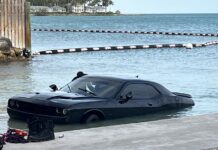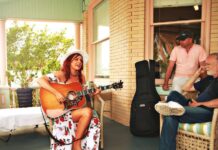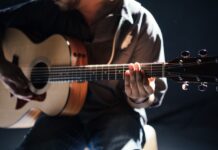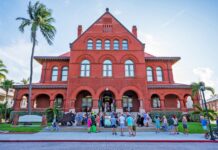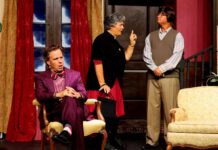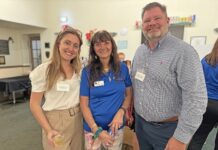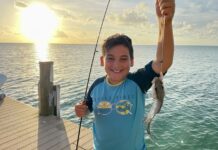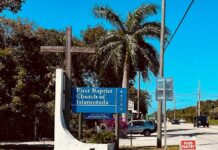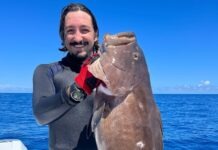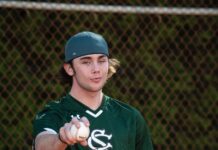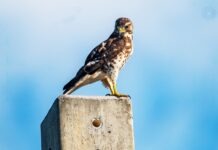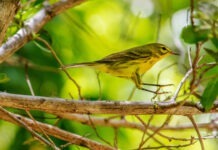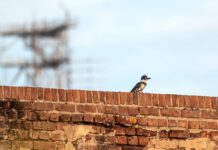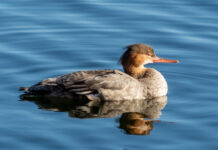Were I a better birder, I would have been at the Key West Tropical Forest & Botanical Garden when the gates opened at 10 a.m., but I’d been reading and doing chores not worth describing, other than the one where, after months of flailing, I had finally got the chlorine levels right in our tiny pool. (Suck it, algae, you stupid eukaryotic organism. Whatever eukaryotic means.)
I’ve been talking lately with my friend Craig Reynolds, landscape architect to the stars, about garden design and whatnot. We were discussing a project he did in Jamaica where he had to integrate some new design work with a pre-existing, formal landscaping scheme that featured scissor-cut grass as well as hedges with Marine Corps-severe buzz cuts. To counterbalance that, and to create something of a visual respite, he created a patch of wild, sprawling, freeform flora as a counterpoint.
“It was driving me crazy that it was so clipped. I had to have something loose,” he said.
It’s not the first time the spectrum between the poles of tight/formal/clipped and loose/relaxed has come up, but it’s been in my mind a lot of late. With the noted exceptions of driving and shooting an apple off someone’s head with a crossbow, I tend to be attracted to the looser end of the range. Precision generally bores the hell out of me. Which is a long way of saying I didn’t manage to show up at the botanical garden until 11:30 – nobody’s prime birding hour, as they tend to be less active during the hottest part of the day.
My vague plan, if you could call it that, was to wander back and forth on the trio of paths that lead from the bridge to the Toppino chapel. But after entering the garden I found myself veering towards Desbiens Pond, over near the FKAA water towers. I took a seat on the small platform and decided I’d sit there until I saw at least 10 species, figuring it’s been the hottest summer ever recorded, and I could wander around and get all sweaty, or I could sit in one place and get sweaty without all the effort.
Desbiens Pond is the most Florida of ponds. I’d call it a seasonal wetland, but it’s more of a micro-lowland, filled with roots and branches, shrinking and growing depending on how much it has rained recently, but somehow never going dry. It’s freshwater and muddy, and at its deepest, probably about eight inches.
The one bird that was pretty much guaranteed was a waterthrush, a type of warbler that spends its days bobbing along the muddy edges of rivers and ponds. Ninety-eight percent of the waterthrushes you see in the Keys are northern waterthrushes, but we do get the odd Louisiana waterthrush.
The first bird I saw, though, was a white ibis, which kind of dropped in through a hole in the canopy, weaved through the crosshatch of branches, and landed out of view on the far side of the pond.
Then, a great-crested flycatcher flew up and sat for a few minutes on a branch over the path, then continued on, no doubt attending to important flycatcher business.
The third bird was a white-crowned pigeon I spotted down in some flooded roots. It was dropping its head, then throwing it back every few seconds as if doing tequila shots. Birds don’t have the ability to suction water up through their beaks, so that is often how they drink. Occasionally it would stretch its right wing out, as if trying to summon a waiter. It was a young bird, its crown more gray than white.
The fourth was a prairie warbler, bright yellow, but with pale dark markings on the edge of the breast, instead of sturdy black markings, meaning it was also a young bird, probably hatched within the last month or two somewhere nearby. It was hunting for bugs down in the low branches, and occasionally dropping down to splash through the water.
The fifth bird was the first official migrant of the morning, a yellow-throated warbler, probably just in from Illinois or South Carolina, with the aforementioned yellow throat looking a bit like a spritely ascot, a bright accent over the white belly and the slaty gray wings and mantle. It was the first yellow-throated I’d seen in months.
The sixth bird was a black-and-white warbler, maybe just down from Canada or East Texas, hopping around horizontally on the side of a tree trunk, like the ’60s TV version of Batman. Only this bird had a white throat, making her female, so she was more like Batgirl.
Seventh was a pair of northern parulas, your basic warbler’s warblers, good looking, but not too good looking, hard working, but not too hard working, always moving, not inclined to linger, but never frantic about it.
After about a half-hour I saw the eighth species – a female red-winged blackbird, striped and brown and so different looking from her male counterparts that it generally takes new birders a while to accept that they are the same species. At least it did me.
It was 12:15 then, and after that all the birds just disappeared. I sat there for 10 minutes., then 20. I heard the ping of a well hit golf ball, the whine of a scooter, the train horn installed in the truck of someone who obviously didn’t get enough attention as a child.
I thought about that scene in “Cool Hand Luke” when Paul Newman, for a bet, says, “I can eat 50 eggs.” And then goes through the nauseating, excruciating process of doing it in an hour. And afterwards George Kennedy’s character goes, “Why you gotta go and say 50 eggs for? Why not 35 or 39?”
Why’d I have to say I’d wait until I saw 10 species? Why not eight?
It took another 10 minutes for an osprey, species number nine, to fly over, no doubt heading for his perch on the flagpole he likes over at the Power Squadron building.
Five minutes after that, a waterthrush flew in, though I had to track it for a while to figure out which species it was. Northern waterthrushes have a faint citrine wash in their pale parts, something that is not always easy to pick up on. The best field mark is the supercilium, a stripe that goes over the eye. Towards the back of the head the stripe tends to narrow down on a northern waterthrush, and get wide on a Louisiana waterthrush.
Finally the bird came out from behind a stump and gave me a good look, bobbing its body to an unknown beat. It faced me directly at first, then turned and gave me a profile. The stripe went up over its eye and then widened like the mouth of a river on a map. Louisiana, number 10.
